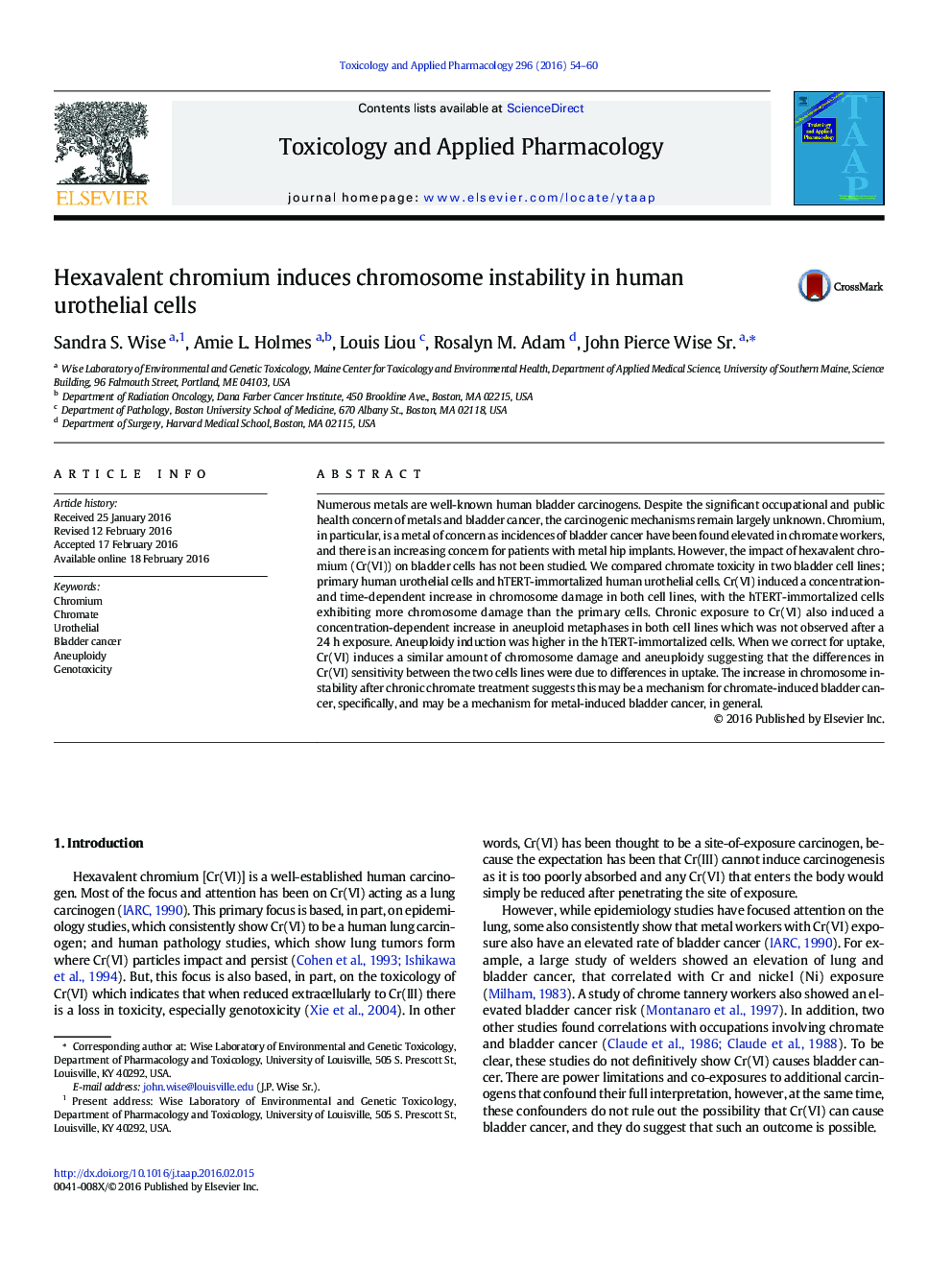| کد مقاله | کد نشریه | سال انتشار | مقاله انگلیسی | نسخه تمام متن |
|---|---|---|---|---|
| 2568190 | 1561166 | 2016 | 7 صفحه PDF | دانلود رایگان |
• Hexavalent chromium is genotoxic to human urothelial cells.
• Hexavalent chromium induces aneuploidy in human urothelial cells.
• hTERT-immortalized human urothelial cells model the effects seen in primary urothelial cells.
• Hexavalent chromium has a strong likelihood of being carcinogenic for bladder tissue.
Numerous metals are well-known human bladder carcinogens. Despite the significant occupational and public health concern of metals and bladder cancer, the carcinogenic mechanisms remain largely unknown. Chromium, in particular, is a metal of concern as incidences of bladder cancer have been found elevated in chromate workers, and there is an increasing concern for patients with metal hip implants. However, the impact of hexavalent chromium (Cr(VI)) on bladder cells has not been studied. We compared chromate toxicity in two bladder cell lines; primary human urothelial cells and hTERT-immortalized human urothelial cells. Cr(VI) induced a concentration- and time-dependent increase in chromosome damage in both cell lines, with the hTERT-immortalized cells exhibiting more chromosome damage than the primary cells. Chronic exposure to Cr(VI) also induced a concentration-dependent increase in aneuploid metaphases in both cell lines which was not observed after a 24 h exposure. Aneuploidy induction was higher in the hTERT-immortalized cells. When we correct for uptake, Cr(VI) induces a similar amount of chromosome damage and aneuploidy suggesting that the differences in Cr(VI) sensitivity between the two cells lines were due to differences in uptake. The increase in chromosome instability after chronic chromate treatment suggests this may be a mechanism for chromate-induced bladder cancer, specifically, and may be a mechanism for metal-induced bladder cancer, in general.
Journal: Toxicology and Applied Pharmacology - Volume 296, 1 April 2016, Pages 54–60
